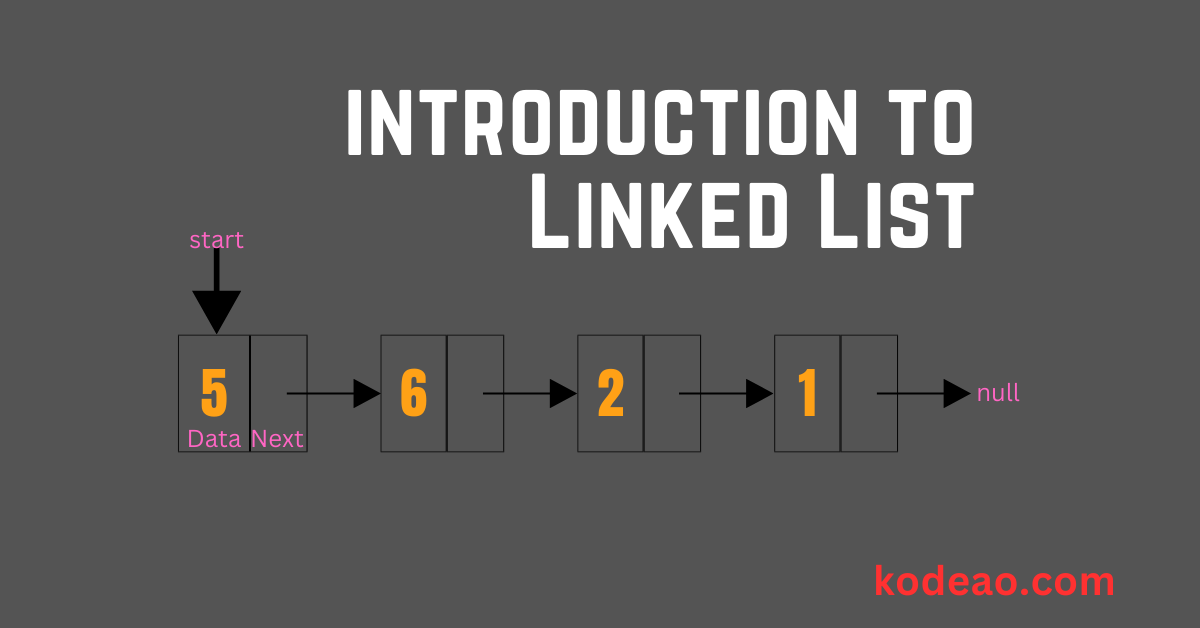When working with data structures, we often come across various types that allow us to store and manage data efficiently. Among them, linked lists hold a special place due to their dynamic nature, making them incredibly useful in scenarios where memory allocation is unpredictable. In this blog, we will cover everything you need to know about linked lists, from the basics to practical use cases and implementation examples.
What is a Linked List?
A linked list is a linear data structure in which elements, called nodes, are connected via pointers. Each node consists of two components:
- Data – The actual value stored in the node.
- Pointer/Reference – A pointer that holds the address of the next node in the sequence.
Unlike arrays, linked lists are not stored in contiguous memory locations, making them flexible in terms of size. They allow efficient insertions and deletions, especially in cases where resizing arrays would be costly.
Types of Linked Lists
There are different variations of linked lists, each catering to specific use cases:
1.Singly Linked List
A singly linked list is the simplest form of linked list where each node points to the next node. It follows a unidirectional flow: each node has a reference to the next, but there is no reference to the previous node.

Structure:
[Data | Next] -> [Data | Next] -> [Data | Next] -> nullPros:
- Efficient insertion and deletion at the beginning.
- Simpler to implement compared to other types.
Cons:
- Traversing from the end to the beginning is not possible.
- Additional memory is used to store the pointer.
2.Doubly Linked List
A doubly linked list enables traversal in both directions. Each node contains two pointers: one that points to the next node and another that points to the previous node.

Structure:
null <- [Prev | Data | Next] <-> [Prev | Data | Next] <-> [Prev | Data | Next] -> nullPros:
- Allows bidirectional traversal.
- Efficient insertion and deletion at both ends.
Cons:
- More memory is required due to the extra pointer.
- Complexity of operations is slightly higher compared to singly linked lists.
3.Circular Linked List
In a circular linked list, the last node points back to the first node, forming a circle. This structure can be applied to both singly and doubly linked lists.

Structure:
[Data | Next] -> [Data | Next] -> [Data | Next] -> [points to first node]Pros:
- No null references; all nodes are connected in a circular manner.
- Efficient in implementing circular queues and playlists.
Cons:
- Careful management of pointers is required to avoid infinite loops.
- Slightly more complex than singly or doubly linked lists.
Key Operations on Linked Lists
Here are the most common operations that can be performed on a linked list:
01.Traversal
Traversing means visiting each node in the list to access or modify its data. In a singly linked list, you start from the head node and follow the chain of pointers until the end.
02.Insertion
- At the Beginning: Create a new node and point its reference to the current head node. Then update the head pointer to the new node.
- At the End: Traverse the list to the last node and update its reference to point to the new node.
- In the Middle: Traverse to the desired position and adjust pointers to insert the new node between two nodes.
03.Deletion
- From the Beginning: Update the head pointer to the next node and free the original head.
- From the End: Traverse to the second-to-last node and set its pointer to null.
- From the Middle: Adjust pointers of the nodes around the node to be deleted and free the target node.
04.Search
To search for an element in the linked list, traverse the list while comparing the data in each node. Once a match is found, the position can be returned.
05.Reversal
Reversing a linked list is a common interview question. For a singly linked list, this involves adjusting the next pointers of each node to point to the previous node instead of the next.
Advantages and Disadvantages of Linked Lists
Advantages:
- Dynamic size: You can easily grow or shrink a linked list.
- Efficient insertions and deletions: Unlike arrays, you don’t need to shift elements after an insertion or deletion.
Disadvantages:
- No random access: You cannot directly access an element using its index like in an array. Traversal is required.
- Higher memory usage: Each node requires additional memory for storing the pointer/reference.
- Poor cache performance: Due to non-contiguous memory storage, accessing elements is slower than arrays in some scenarios.
Applications of Linked Lists
Linked lists are widely used in computer science and software development. Some common use cases include:
- Implementation of stacks and queues.
- Dynamic memory allocation: Operating systems often use linked lists to manage free memory blocks.
- Graph adjacency representation: Graphs can be represented using adjacency lists, which are a form of linked lists.
- Undo functionality: Applications like text editors often use linked lists to maintain the history of changes.
- Hash chaining in hash tables: Linked lists are used to handle collisions in hash tables.
Conclusion
Linked lists are a fundamental data structure that provide dynamic memory management and efficient operations. Whether you’re implementing queues, stacks, or working with graphs, linked lists are an essential tool to have in your programming toolkit. Understanding their types, operations, and differences from arrays will help you make informed decisions when choosing the right data structure for your applications.
In your next project, when flexibility and frequent insertions or deletions are required, give linked lists a try!
Hope this guide helps you understand linked lists better! Let me know if you have any questions or suggestions!


2 thoughts on “A Complete Guide to Linked Lists in Data Structures”